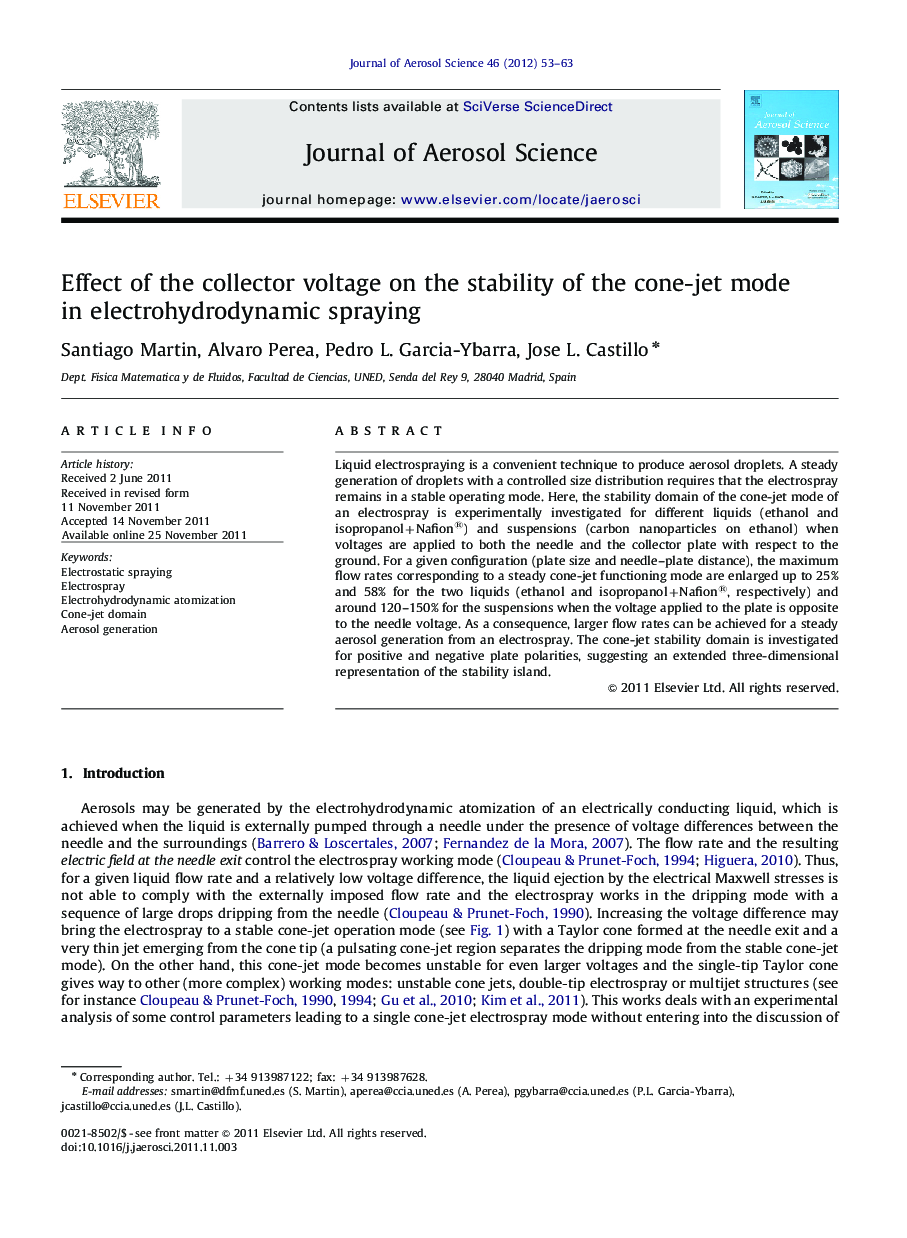| Article ID | Journal | Published Year | Pages | File Type |
|---|---|---|---|---|
| 4452693 | Journal of Aerosol Science | 2012 | 11 Pages |
Liquid electrospraying is a convenient technique to produce aerosol droplets. A steady generation of droplets with a controlled size distribution requires that the electrospray remains in a stable operating mode. Here, the stability domain of the cone-jet mode of an electrospray is experimentally investigated for different liquids (ethanol and isopropanol+Nafion®) and suspensions (carbon nanoparticles on ethanol) when voltages are applied to both the needle and the collector plate with respect to the ground. For a given configuration (plate size and needle–plate distance), the maximum flow rates corresponding to a steady cone-jet functioning mode are enlarged up to 25% and 58% for the two liquids (ethanol and isopropanol+Nafion®, respectively) and around 120–150% for the suspensions when the voltage applied to the plate is opposite to the needle voltage. As a consequence, larger flow rates can be achieved for a steady aerosol generation from an electrospray. The cone-jet stability domain is investigated for positive and negative plate polarities, suggesting an extended three-dimensional representation of the stability island.
Graphical abstractFigure optionsDownload full-size imageDownload high-quality image (96 K)Download as PowerPoint slideHighlights► Experimental study of the steady cone-jet mode in electrohydrodynamic spraying. ► Different voltages applied at the needle and collector plate facing the needle. ► Stability range of steady cone-jets depends on collector voltage. ► Larger flow rates can be achieved for a steady aerosol generation.
